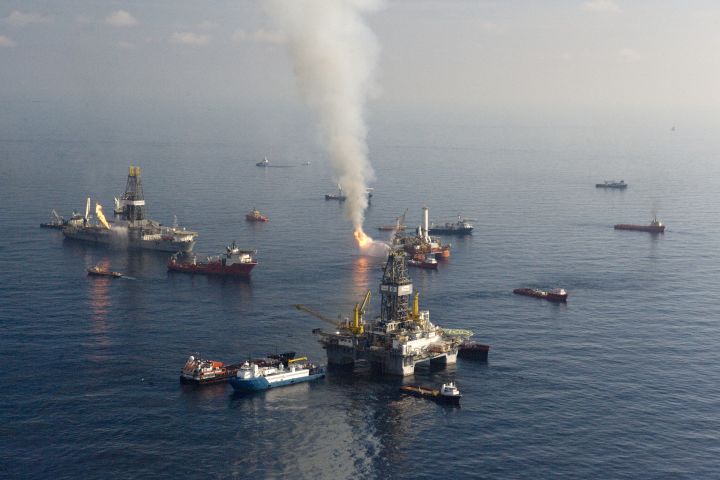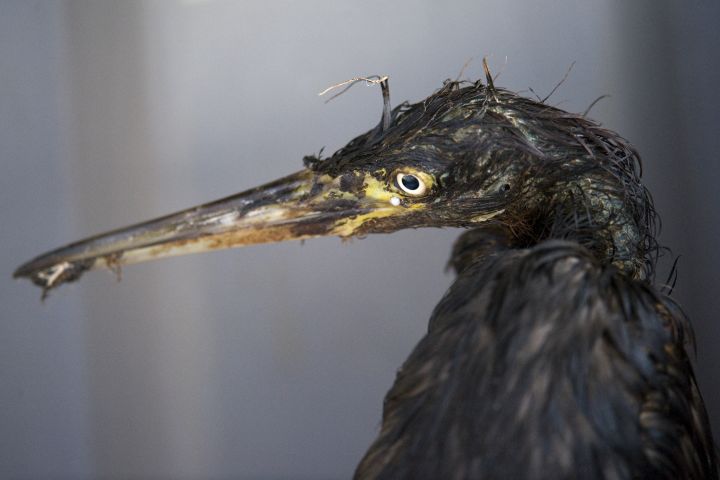IDEA SET
IDEA SET
Rescuing, Relocating, and Rehabilitating Wildlife
Rescuing, Relocating, and Rehabilitating Wildlife
Students read about oil spills and the 2010 Gulf of Mexico oil spill. They geo-locate the Deepwater Horizon spill and use a diagram to investigate the diversity of flora and fauna in the Gulf of Mexico. Then students discuss how oil adversely affects wildlife, watch a video and read an article about wildlife relocation, and discuss the ethics and possible environmental repercussions of animal relocation.
Grades
9 - 12+
Subjects
Biology, Earth Science, Oceanography, English Language Arts, Geography, Physical Geography
This resource is also available in Spanish.
Our increasing reliance on oil and petroleum products has resulted in multiple marine oil spills at offshore drilling sites and from transport vessels. Oil spills are detrimental to the health of marine environments and marine organisms. After environmental disasters like the Deepwater Horizon oil spill, scientists and volunteers rescue, rehabilitate, release, and sometimes relocate affected wildlife. Sea turtles and oiled birds are two of the most common animals that are rescued. Scientists relocate organisms to prevent future contamination of individuals and to help preserve a species.
Informal Assessment
Assess students’ persuasive essays based on organization, content, and voice.
Extending the Learning
Have students track migrating sea turtles that are radio tagged on the Sea Turtle Conservancy website to see turtle migration in action.

Directions
1. Build background about the 2010 Gulf of Mexico oil spill.
Distribute the handout Oil Spills in Marine Environments for independent or small-group reading. Answer any questions students may have about the information.
2. Discuss biodiversity and habitats in the Gulf of Mexico.
Download and show students the Layers of Life diagram that accompanies the map, Gulf of Mexico: A Geography of Offshore Oil, from the October 2010 issue of National Geographic magazine. Explain that the Gulf of Mexico is home to many species of plants and animals and that many organisms found within Gulf of Mexico ecosystems were adversely affected by the oil spill. Ask: What are the different types of ecosystems found within the Gulf of Mexico that may have been affected by the spill? What animal and plant life was affected by the spill? Tell students that cleanup crews worked to rescue, rehabilitate, and occasionally relocate affected wildlife.
3. Watch a video about sea turtle relocation.
Have students watch the National Geographic video about sea turtles and the oil spill: “Gulf Turtle Eggs Relocated.” As they watch, ask them to record the names of specific locations they hear mentioned in the video, and jot notes on what happened at these locations. Then have students use the map Gulf of Mexico: A Geography of Offshore Oil to find some of those locations. For example, students should be able to find the place where loggerhead turtle eggs were relocated from and the place the kemps ridley sea turtles were relocated to and released from. If students have difficulty, tell them that Gulf Shores, Alabama, is located by Bon Secour National Wildlife Refuge, and point out the Canaveral National Seashore. Ask: What reasons were given to justify why it was an appropriate strategy to relocate turtles to the Atlantic coast? What is the likely outcome for young turtles that were not relocated from the Gulf coast to the Atlantic coast around this time?
4. Read about oiled birds.
Have students read the National Geographic News article “Oil-Coated Gulf Birds Better Off Dead?” Answer any questions they may have about the reading.
5. Have a class discussion about care for impacted wildlife.
Have a group discussion or debate about the pros and cons of rescuing, rehabilitating, and relocating wildlife. Use the following questions to prompt students to synthesize what they have learned, and also to discuss their opinions:
- Do you think it is humane to try to rehabilitate these animals? Why or why not?
- Do you think it is our responsibility to try to help wildlife when humans are the source of the problem? Why or why not?
Ask each student to use the discussion points to write a persuasive essay that answers the guiding question: After oil spills, should humans rescue, rehabilitate, and/or relocate wildlife? Students should support their argument with facts they learned over the course of the activity.

Objectives
Learning Objectives
Students will:
- explain why oil is a threat to marine organisms, such as sea turtles
- use a map to locate sites of turtle nesting and relocation
- discuss human responsibility and the ethics of rescuing and relocating wildlife
- discuss the pros and cons of rescuing and relocating wildlife for the individual organism, the species, and the ecosystem
Teaching Approach
- Learning-for-use
Teaching Methods
- Discussions
- Multimedia instruction
- Reading
- Reflection
Skills Summary
This activity targets the following skills:
- Critical Thinking Skills
- Analyzing
- Evaluating
- Understanding
- Geographic Skills
- Acquiring Geographic Information
- Analyzing Geographic Information
Connections to National Standards, Principles, and Practices
National Council for Social Studies Curriculum Standards
- Theme 3: People, Places, and Environments
- Standard 14: How human actions modify the physical environment
National Science Education Standards
- (9-12) Standard F-3: Natural resources
- (9-12) Standard F-4: Environmental quality
Ocean Literacy Essential Principles and Fundamental Concepts
- Principle 6e: Humans affect the ocean in a variety of ways. Laws, regulations and resource management affect what is taken out and put into the ocean. Human development and activity leads to pollution (such as point source, non-point source, and noise pollution) and physical modifications (such as changes to beaches, shores and rivers). In addition, humans have removed most of the large vertebrates from the ocean.

Preparation
What You’ll Need
Materials You Provide
- Pencils
- Writing paper
Required Technology
- Internet Access: Optional
- Tech Setup: 1 computer per classroom, Projector, Speakers
Physical Space
- Classroom
Grouping
- Large-group instruction
Media Credits
The audio, illustrations, photos, and videos are credited beneath the media asset, except for promotional images, which generally link to another page that contains the media credit. The Rights Holder for media is the person or group credited.
Writer
Editors
other
Last Updated
March 7, 2024
For information on user permissions, please read our Terms of Service. If you have questions about how to cite anything on our website in your project or classroom presentation, please contact your teacher. They will best know the preferred format. When you reach out to them, you will need the page title, URL, and the date you accessed the resource.
Media
If a media asset is downloadable, a download button appears in the corner of the media viewer. If no button appears, you cannot download or save the media.
Text
Text on this page is printable and can be used according to our Terms of Service.
Interactives
Any interactives on this page can only be played while you are visiting our website. You cannot download interactives.

